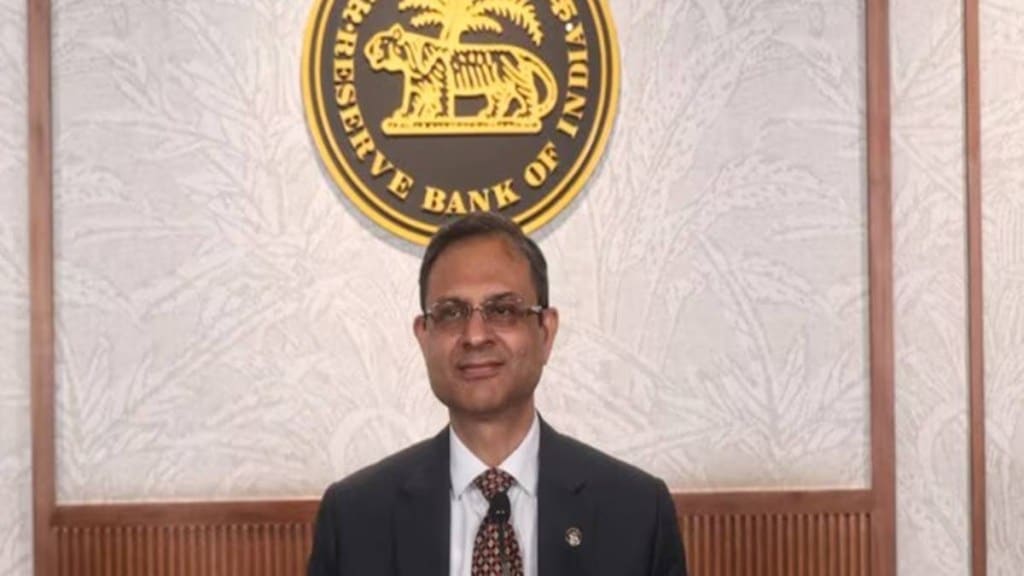The Monetary Policy Committee on Wednesday decided to press the pause button on its benchmark interest rate and neutral stance as broadly expected, giving a clear signal that the central bank is keeping its powder dry for uncertainties arising out of any tariff threat from the US.
The time limit for using the dry powder, however, will be short as the MPC decision came hours before US President Donald Trump’s late evening tariff bombshell of an additional 25% tariff on India for buying Russian oil, after 21 days.
Earlier in the day, Reserve Bank of India Governor Sanjay Malhotra said in his monetary policy statement, “The current macroeconomic conditions, outlook and uncertainties call for continuation of the policy repo rate of 5.50% and wait for further transmission of the front-loaded rate cut to the credit markets and the broader economy. Accordingly, the MPC unanimously voted to keep the repo rate unchanged.”
He added that incoming data will be monitored, and necessary changes would be made on a “policy-to-policy basis”.
RBI expects the inflation rate to surge 4.4% in fourth quarter
The inflation projection for FY26 has been revised downwards to 3.1% from 3.7% earlier. However, the banking regulator anticipates the rates to climb to 4.4% in the fourth quarter and 4.9% in the first quarter of FY27, primarily due to base effect and demand-side factors from the policy action that will come into play.
At the same time, growth projection for FY26 has been kept unchanged while for FY27, it has been pegged at 6.6%. Malhotra said that even though the growth is robust, it is below the “aspiration”.
“Prospects of external demand, however, remain uncertain amidst ongoing tariff announcements and trade negotiations. The headwinds emanating from prolonged geopolitical tensions, persisting global uncertainties, and volatility in global financial markets pose risks to the growth outlook,” added Malhotra.
The stock market, which seemed to have priced in the pause, did not react much. The Sensex closed down by 166 points at 80,544. The rupee recovered 7 paise from its all-time low on Tuesday to close at 87.73/$. However, the 10-year bond yields rose 8 basis points — the highest single-day rise since June 4, 2024 — to close at 6.416% (the highest since April 11).
Many traders said the policy statement lacked any obvious dovishness, leaving the market divided on the direction of interest rates, though the majority view seems to be any additional rate cuts would require a significant deterioration in growth, as the threshold for easing is currently set quite high.
Pranjul Bhandari, chief economist (India), HSBC, wrote that the combination of higher one-year ahead growth and inflation forecasts may well suggest that the bar for further easing is rather elevated.
“We think that if subsequent growth data comes out weaker, the RBI could well lower its FY26 growth forecast and deliver a cut. We are holding on to our 25bp rate cut in 4Q2025,” added Bhandari.
“The combination of the governor’s statement and forward-looking inflation forecasts, indicates ‘a somewhat hawkish pause’, relative to our expectations as well as those of the market,” said Santanu Sengupta, India chief economist, Goldman Sachs.
K Balasubramanian, CEO Citi India & banking head, Indian Subcontinent, said that the RBI’s decision to not effect another rate cut after three successive reductions is prudent – reflecting a balanced approach amid global uncertainties. This would preserve flexibility to navigate emerging global challenges and provide time for consolidating the gains from earlier easing.
Nilesh Shah, MD, Kotak AMC, added that since liquidity is growth supportive, any future policy decision will be data driven with, either a prolonged hold or a cut, if inflation supports.
While acknowledging the uncertainties due to the US’ tariff threats, RBI deputy governor Poonam Gupta said that the first-order impact of uncertainties was that inflation is likely to be very limited, as 50% of the inflation basket consists of food which does not get directly impacted by global uncertainties.
Liquidity in the sector has doubled
The apex bank has the comfort of sufficient liquidity in the system. The liquidity in the sector has been in surplus, on an average of Rs 3 lakh crore per day since the last policy as compared to Rs 1.6 lakh crore during the previous two months. With the CRR (cash reserve ratio) cut coming into effect from September, more liquidity will be added in the system aiding the transmission of the policy rates.
Since the first rate cut in February, the weighted average lending rate on fresh rupee loans fell by 71 basis points, of which 55 bps are due to interest rate reduction, while in the case of fresh rupee term deposits, the weighted average term deposit rate moderated by 87 basis points.
The RBI also announced a few consumer-centric measures. With the Jan Dhan Scheme completing 10 years, a large number of accounts have to undergo re-KYC. Banks are organising camps at panchayat level till September-end to provide services at customer doorsteps. In addition, these camps will also focus on micro-insurance and pension schemes for financial inclusion and customer grievance redressal.
Further, there will be a standardisation of the procedure for settlement of claims in respect of bank accounts and articles kept in safe custody or safe deposit lockers of deceased customers.
Also, retail investors will be allowed to do systematic investment plans in treasury bills by expanding the functionality in RBI Retail-Direct platform.

